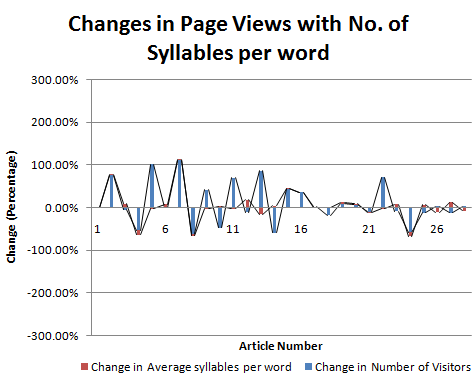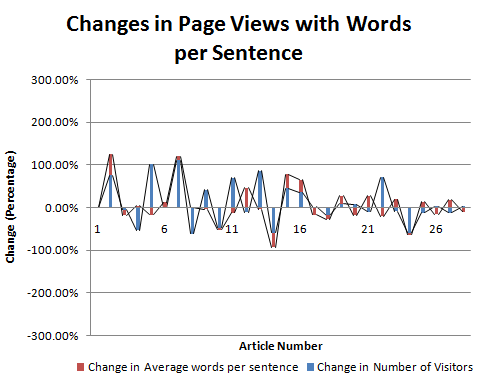How do syllables lead to difference in page views? Does the number of syllables in a passage actually make the reader's job difficult or easy?
There aren't enough things that can be modified by a writer. But the short list would include definitely include syllables.
Syllable in the simplest of form can be called as a unit of tone itself. When you pronounce 'SOBER' you actually combine two different syllables, 'SO' and 'BER'.
How does it matter you ask?
Many people when reading often voice the text, which means they do not simply ingest the text through their eyes, but also pronounce the words in their mind. Hence, the words employing large number of text might pose a problem.
This might seem true logically, but there is another reasonining that might put you in a difficult position. Lower number of syllables might lead to a rough and dull passage, giving rise to lower readership.
So what should you do, let us find out through an experiment.
The Experiment,
28 separate articles, published on codemakit.com at different times in 2014 were tested using a simple readability scanner. The text in each article was scanned to find out the average number of syllables per unit word.
We'll now discuss the role, syllables play in gathering page views, which would be found out by checking if increasing the number of syllables per unit word leads to higher or lower page views.
Relation between Syllables per word and page views
The provides a very different picture altogether about how the changes in syllables can lead to differences in the page views (pageviews)TO understand it further, we need to compare it quantitatively.
Total number of articles compared = 28
Number of articles were number of syllables per word were proportional to page views = 11
Percentage of instances where number of sentences were proportional to page views = 11/28 = 40%
So, percentage of instances where Average number of syllables per word were proportional to page views = 17/28 = 60%
Thus the average number of syllables per word can be directly proportional to the page views. However, this must be seen in moderation and cannot be taken as a rule of thumb.
Conclusion,
Number of Syllables per unit word is directly proportional Page views.Related Reading
To find more about the above topic, you can check out The Relation between Reading ease and Viewership through an experiment on Reading ease.Do you want to know, how to calculate the readability of a passage?
You can also find simple relations like,
The relation between Page Views and Sentence Length,
This was about,

























































.png)

.png)